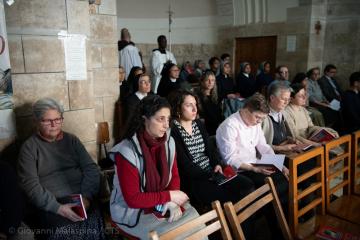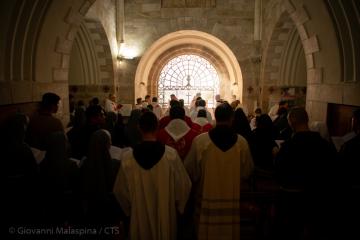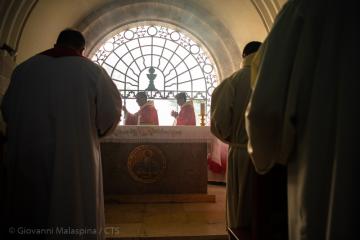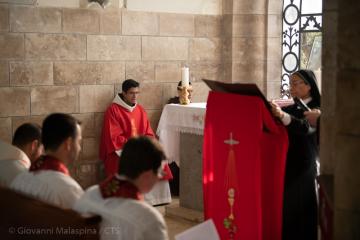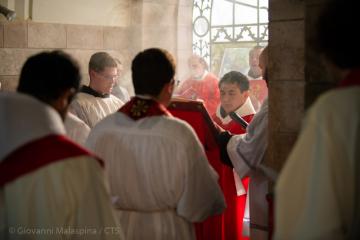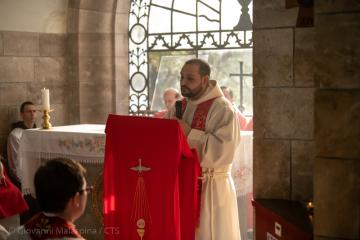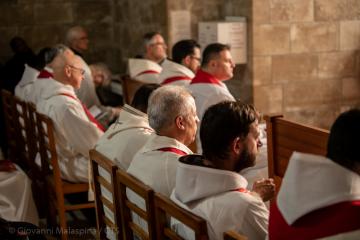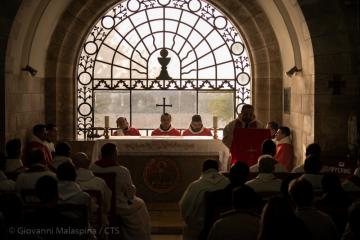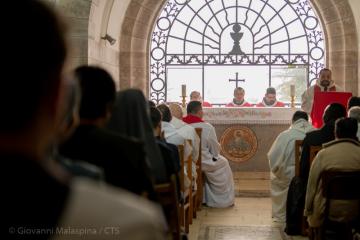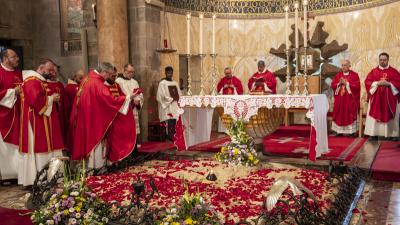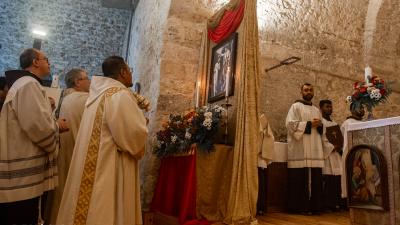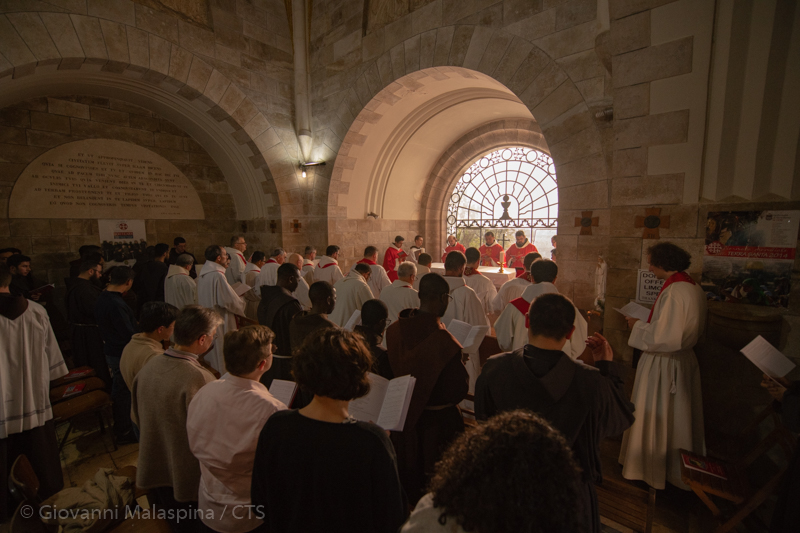
Dominus Flevit is the place where according to tradition Jesus wept, after having looked at Jerusalem and predicted its ruin (Matthew 24; Mark 13 and Luke 21). Every year, the Lenten peregrinations of the Franciscan friars of the Custody of the Holy Land begin from the church of Dominus Flevit (literally “the Lord wept”), on the Mount of Olives. On Wednesday 11th March 2020 Fr. Donaciano Paredes, the master of the students of St Saviour, presided the Holy Mass at Dominus Flevit. The tradition of celebrating in the places where the moments of the Passion of Jesus took place dates back to the first centuries of the Christian era and still continues today.
Fr. Eliazar Arteaga Chavero started the homily from the word “tear”, the shape in which the sanctuary is built. He then asked the faithful to imagine themselves like homes in the Holy City, which Jesus addressed. It is as though Jesus were speaking to each one of us individually and, for us as well. as for the city of Jerusalem, it is easy not to recognize Jesus, even when he is in front of us. “If we do not recognize Jesus, we will not find peace in our lives,” said Fr. Eliazar. “I invite you to pray for the sick as well, at this difficult time.”
At the end of the Holy Mass, Fr. Sebastiano Eclimes, superior of Dominus Flevit, offered all the guests refreshments in front of the convent which, on the Mount of Olives, enjoys an excellent view of the City. The Mount of Olives was an important centre for the memory of the first Christians: it was the place from where they could see the remains of the ancient Holy City after its destruction and a part of the new Jerusalem, still being built by the Romans. The memory of Dominus Flevit dates back to the end of the 13th-early 14th century. The present-day Sanctuary, built in the shape of a tear, completed in 1956, was designed by the architect Antonio Barluzzi, on the remains of a 5th century Byzantine church.
Beatrice Guarrera


